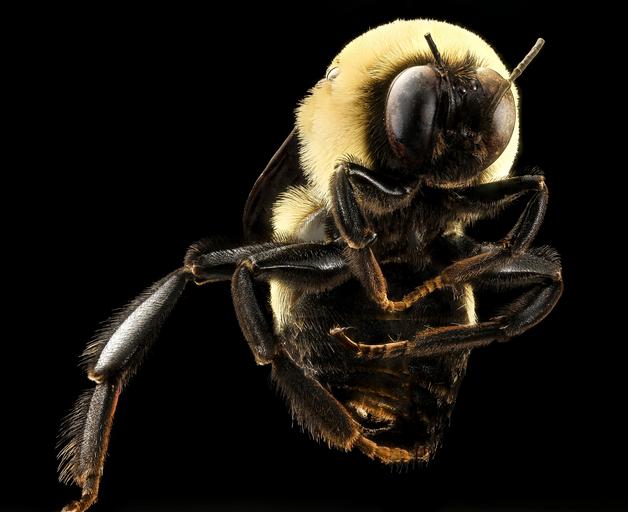MAKE A MEME
View Large Image

| View Original: | Bombus_fraternus,_m,_bottom_and_legs,_Charleston_Co.,_SC_2016-09-14-11.03.jpg (4710x3840) | |||
| Download: | Original | Medium | Small | Thumb |
| Courtesy of: | www.flickr.com | More Like This | ||
| Keywords: zerene stacker zerenestacker stackshot geological survey geologicalsurvey united states geological survey unitedstatesgeologicalsurvey department of the interior departmentoftheinterior droege biml bee inventory and monitoring laboratory beeinventoryandmonitoringlaboratory bug bugs canon close-up closeup macro insect patuxent wildlife research center patuxentwildliferesearchcenter pwrc usgs dofstacking stacking canon mpe65 canonmpe65 taxonomy:binomial=bombus fraternus taxonomy:binomial=bombusfraternus bee bees apoidea hymenoptera pollinator nativebee south carolina southcarolina charleston mimi jenkins mimijenkins anders croft anderscroft watermelon black background surreal Check the eyes out on this male Bumble Bee. We already put up a spread of female B. fraternus, but the male has some pretty unique features for bumble bees. For one, the eyes are HUGE, they nearly meet at the top of the head. Only a few other bumbles do that...and the face is extremely short, with the mandibles almost joined to the bottom of the eyes. So, the general speculation (royally on my part that is) is that larger eyes means a more visual approach to life. Life for all male bees is about founding as many babies as possible the next generation. So likely this male is doing a lot of scanning and scouting for receptive queens from a perch or at a distance the better to get first access Is that true? Not sure, but its the best I can come up with. Captured by Mimi Jenkins in the fields of Watermelons of Charleston, SC and you can thank a bumble bee at your next picnic. Illuminated in the beer cooler modeling studios of the USGS Bee Inventory and Monitoring Lab by none other than.... Anders Croft. ~~~~~~~~~~{{{{{{0}}}}}}~~~~~~~~~~ All photographs are public domain, feel free to download and use as you wish. Photography Information: Canon Mark II 5D, Zerene Stacker, Stackshot Sled, 65mm Canon MP-E 1-5X macro lens, Twin Macro Flash in Styrofoam Cooler, F5.0, ISO 100, Shutter Speed 200 Beauty is truth, truth beauty - that is all Ye know on earth and all ye need to know " Ode on a Grecian Urn" John Keats You can also follow us on Instagram - account = USGSBIML Want some Useful Links to the Techniques We Use? Well now here you go Citizen: Art Photo Book: Bees: An Up-Close Look at Pollinators Around the World www.qbookshop.com/products/216627/9780760347386/Bees.html... Basic USGSBIML set up: www.youtube.com/watch?v=S-_yvIsucOY USGSBIML Photoshopping Technique: Note that we now have added using the burn tool at 50% opacity set to shadows to clean up the halos that bleed into the black background from "hot" color sections of the picture. www.youtube.com/watch?v=Bdmx_8zqvN4 PDF of Basic USGSBIML Photography Set Up: ftp://ftpext.usgs.gov/pub/er/md/laurel/Droege/How%20to%20Take%20MacroPhotographs%20of%20Insects%20BIML%20Lab2.pdf Google Hangout Demonstration of Techniques: plus.google.com/events/c5569losvskrv2nu606ltof8odo or www.youtube.com/watch?v=4c15neFttoU Excellent Technical Form on Stacking: www.photomacrography.net/ Contact information: Sam Droege [email protected] 301 497 5840 Check the eyes out on this male Bumble Bee. We already put up a spread of female B. fraternus, but the male has some pretty unique features for bumble bees. For one, the eyes are HUGE, they nearly meet at the top of the head. Only a few other bumbles do that...and the face is extremely short, with the mandibles almost joined to the bottom of the eyes. So, the general speculation (royally on my part that is) is that larger eyes means a more visual approach to life. Life for all male bees is about founding as many babies as possible the next generation. So likely this male is doing a lot of scanning and scouting for receptive queens from a perch or at a distance the better to get first access Is that true? Not sure, but its the best I can come up with. Captured by Mimi Jenkins in the fields of Watermelons of Charleston, SC and you can thank a bumble bee at your next picnic. Illuminated in the beer cooler modeling studios of the USGS Bee Inventory and Monitoring Lab by none other than.... Anders Croft. ~~~~~~~~~~{{{{{{0}}}}}}~~~~~~~~~~ All photographs are public domain, feel free to download and use as you wish. Photography Information: Canon Mark II 5D, Zerene Stacker, Stackshot Sled, 65mm Canon MP-E 1-5X macro lens, Twin Macro Flash in Styrofoam Cooler, F5.0, ISO 100, Shutter Speed 200 Beauty is truth, truth beauty - that is all Ye know on earth and all ye need to know " Ode on a Grecian Urn" John Keats You can also follow us on Instagram - account = USGSBIML Want some Useful Links to the Techniques We Use? Well now here you go Citizen: Art Photo Book: Bees: An Up-Close Look at Pollinators Around the World www.qbookshop.com/products/216627/9780760347386/Bees.html... Basic USGSBIML set up: www.youtube.com/watch?v=S-_yvIsucOY USGSBIML Photoshopping Technique: Note that we now have added using the burn tool at 50% opacity set to shadows to clean up the halos that bleed into the black background from "hot" color sections of the picture. www.youtube.com/watch?v=Bdmx_8zqvN4 PDF of Basic USGSBIML Photography Set Up: ftp://ftpext.usgs.gov/pub/er/md/laurel/Droege/How%20to%20Take%20MacroPhotographs%20of%20Insects%20BIML%20Lab2.pdf Google Hangout Demonstration of Techniques: plus.google.com/events/c5569losvskrv2nu606ltof8odo or www.youtube.com/watch?v=4c15neFttoU Excellent Technical Form on Stacking: www.photomacrography.net/ Contact information: Sam Droege [email protected] 301 497 5840 | ||||